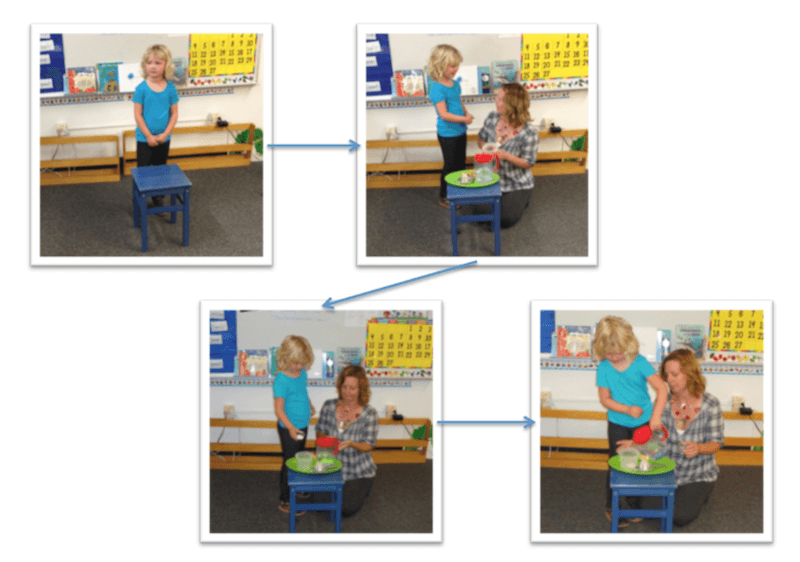“So Beatrice, what are you going to make today?”
“Lemonade.”
“And what’s the first ingredient?”
“Lemons.”
“And what’s second?”
“Sugar.”
“And then what?”
“Um…ice.”
“Yes, ice, but also water, right?”
“Yes, and water!”
And that’s how it went on my oldest daughter Beatrice’s final Pre-K share and leader day recently – three easy steps – just like Special Agent Oso from Disney Junior teaches toddlers to do. Actually, four easy steps in this case, only because when Bea makes lemonade, it’s always too warm for her and so she wants to add ice to cool it down, along with adding the water.
Three (to four) easy steps to learning something new. In a fun way. A way you’ll always remember and that helps the learning stick, without much inhibition and a full-throttle curiosity of how things work that can be insatiable. To know is to do, again and again and again.
And the kids, well, that’s where they have us beat. Us being the adults in the room. According to a recent Freakonomics podcast titled Think Like a Child, Alison Gopnik, a professor of psychology and philosophy at the University of California-Berkeley and the author of The Philosophical Baby: What Children’s Minds Tell Us About Truth, Love, and the Meaning of Life, has done some fascinating research on children’s cognitive processes and development. In this podcast, Gopnik describes how modern research shows that kids are much more than just underdeveloped adults:
“Think of the kids as being the research and development division of the human species. And we’re—adults—we’re production and marketing. So from the production and marketing perspective, it might look like the R&D guys are really not doing anything that looks very sensible or useful. They sit around all day in their beanbag chairs playing Pong and having blue-sky ideas. And we poor production and marketing people, who are actually making the profits, have to subsidize these guys! But of course, one of the things that we know is that that kind of blue-sky, just pure, research actually pays off in the long run.”
Those are my girls for sure. But first, there’s a goal. There’s always a goal.

“Beatrice, do you want to learn how to make lemonade?”
“Yes, I do. It’s yummy.”
There you go. The goal. To make lemonade. Mercy, all we gotta do next is put a lemonade stand together out front and we got ourselves a lil’ business. It is nearly summertime, you know.
The main goal. The three easy steps to reach that main goal, and the goals around completing the three easy steps. A baby-steps business model. A cadence that includes reaching said goals, establishing new ones, and learning something new each and every time that leads to growth and success.
To know is to do, again and again and again.
Unfortunately, this ain’t the case for many companies. Unhappiness and employee turnover are still all too common challenges for organizations of all shapes and size and industries. It’s an overgrown and thorny path that leaders and HR teams walk bare foot daily, with no compass to guide them, no “where the wild things are” curiosity driving the cadence of learning and growing (personally, professionally and monetarily).
This unruly, wild west “talent cycle” can create poor climates and cultures where your people are forced to scramble and hire reactively each time an employee makes a move toward the door.
Listening to Andre Lavoie, CEO and co-founder of ClearCompany, talk about how companies and business leaders need to establish values and primary goals (or reestablish them), aligning cascading goals and developing and managing a cadence to get all the business at hand done successfully and continuously, certainly inspired me to share the lemons-to-lemonade backstory.
Us adults in the room have killed the childhood R&D, and in the same last gasping breath, talent management strategies of the past no longer work. Today people work differently, are motivated differently and are engaged differently, and want their performance measured differently. Millennials may have pushed all the employer flexibility buttons, but now every generation is demanding more.
For example, employees want ongoing growth opportunities, workplace flexibility, tools and systems that encourage collaboration, and commitment to a reciprocal climate of support and encouragement, all of which lead to payoffs in employee retention, satisfaction, and overall business performance. Organizations can no longer afford to simply “manage people,” because the people demand more – they want aligned business goals that they’re part of and that are attainable and evolve collaboratively over time.
We want lemonade stands and the cadence of two easy steps:
- Recognize. Organizations need to provide attractive corporate and employee cultures that recognizes the individual, while promoting innovation, learning, collaboration and connections. They need a visionary talent engagement experience that is orchestrated around people and people goals, not processes. The key now is to drive a higher level of contribution, deeper engagement through a better “people management” experience.
- Experience. These attributes – the aligned goals, the learning, the development, the sound business model, the full-throttle curiosity of how things work – all culminate in delivering an amplifier effect on talent contribution and success. Organizations that provide a more engaging experience can better gain adoption of the talent initiatives throughout the company, and align individual objectives to business goals to improve performance, retention, and productivity.
This “amplifier effect” of people’s contributions upon aligned, accomplished goals has a rapid and lasting impact over time. Positive business outcomes become the norm.
Just add sugar and ice, right? It’s yummy indeed.
photo credit: InspirationDC via photopin cc
Post Views: 1,814